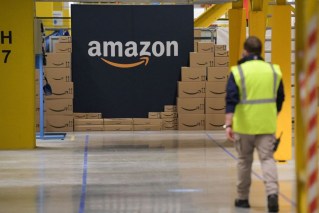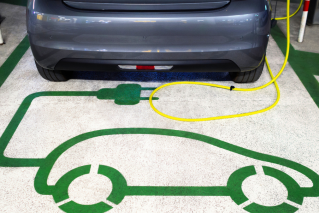Michael Pascoe: Don’t be fooled by a teeny, tiny retail sales blip


Don't believe the hype – a slight uptick in monthly retail turnover isn't quote the boon it's been made out to be. Photo: Getty
The joy of statistics is that so much or little can be made of them. The immediate headlines in The Australian and Sydney Morning Herald made much of the latest retail sales figures. They look wishful.
Yes, the seasonally adjusted June retail sales count was up 0.4 per cent on May – one notch better than most market economists were tipping – and that’s better news than a fall.
But, as everyone should know, a single seasonally adjusted month means little given the way numbers bounce around, as shown by the Australian Bureau of Statistics (ABS) graph of the trend and seasonally adjusted figures.

A graph showing Australian retail turnover.
One swallow does not a summer make. One month’s a-fraction-better-than-expected seasonally adjusted result barely rates an Indian myna.
The reality of Australian retail is more like the ABS trend bar chart. It’s been flat on 0.2 per cent for 11 months in a row now.

A graph of monthly turnover.
And the original figures, the actual dollars counted by the ABS without fiddling around with seasonal adjustment estimates, are worse again.
The “trend” count shows growth over the year of 2.7 per cent, but the actual dollars are only up 1.9 per cent, from $25,827.2 million in June 2018 to $26,311.9 million.
But wait, there’s more – or actually less. The June quarter trend count of stuff, rather than dollars, shows the number of things bought in the latest quarter didn’t grow at all from the March quarter.
That’s despite there being more of us. As Ernst & Young economist Jo Masters reminded anyone who cares: “Retail volumes per capita fell for the fourth consecutive quarter, falling 0.2 per cent quarter/quarter to be 1.4 per cent lower than a year ago.”
It’s only population growth that’s providing any volume growth at all – and not much.
As AMP chief economist, Shane Oliver, simply put it, June quarter retail sales came in very weak again.
With the volume figure feeding into the national accounts, we’re on track to receive a miserable contribution from household consumption towards GDP growth. Yes, when the figures are published next month, GDP growth for the 2018-19 financial year is likely to be the lowest since 1992 despite the booming export commodities price windfall.
Household consumption accounts for more than half the economy. Retail sales are not the only component of consumption, but they are an important one.
With the economy running soft, it’s hard to see how employment growth can be maintained at a sufficient level to stop unemployment rising. Josh Frydenberg’s Treasury is about the only body not forecasting rising unemployment at present.
The government’s professed hope is that its tax cuts and the RBA’s interest rate cuts will get people spending again and push our growth rate up to speed. I wouldn’t bet on that just yet.
Westpac’s analysis of the much-promoted tax cuts shows only 30 per cent of taxpayers will receive the headline $1080. Some 26 per cent of taxpayers will get nothing from the policy this financial year. The average payout across all taxpayers will be about $550.
The household trend of late has been to try to buy less and save a bit more. The government’s rhetoric is that we have a “strong economy”, but households’ behaviour is saying otherwise.
As for the interest rate cuts, as reported elsewhere here, much of their impact disappears into asset prices. Again, that tendency to try to pay down more debt and save a little means much of the rate cut will go straight into reducing mortgages rather than reducing mortgage payments.
Only a month or so ago, much of the economic commentary assumed the government would come to the party with some further stimulus to help out the RBA.
That commentary has disappeared with Mr Frydenberg sticking to his surplus-first commitment and with Scott Morrison ruling out even a small Newstart increase while “cracking down” harder on welfare payments – good ol’ populist “dole bludger” bashing.
With rising unemployment, depressed retail sales, many more jobless than jobs and renewed levels of Trump-initiated trade worries, welfare payments are the least of our worries.








